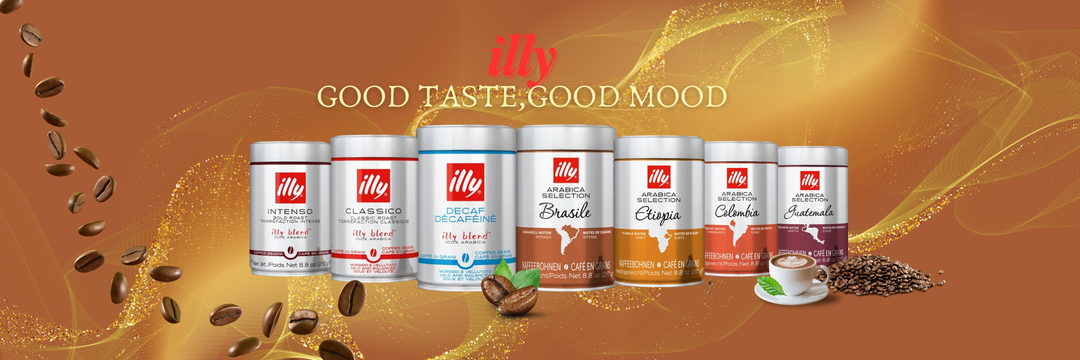How does roasting affect the flavor of coffee beans?
How does roasting affect the flavor of coffee beans?
Blog Article

Roasting is one of the most crucial steps in transforming raw coffee beans into the aromatic, flavorful beverage we love. The roasting process significantly influences the flavor, aroma, and texture of coffee. As the beans undergo roasting, chemical reactions take place, bringing out different flavor profiles depending on the temperature, time, and roasting method used. Let’s explore how roasting affects the flavor of coffee beans and how different roast levels can create a unique coffee experience.
The Roasting Process: A Chemical Transformation
When green coffee beans are roasted, they undergo a series of physical and chemical changes. Heat causes the beans to expand, darken, and release moisture, while compounds inside the beans break down to form new flavors and aromas. This transformation is a complex process involving the Maillard reaction, caramelization, and the breakdown of acids and sugars.
The longer the beans are roasted, the more pronounced the changes become, affecting their final flavor, acidity, and body. The roasting process also influences the caffeine content, with lighter roasts retaining more caffeine than darker roasts.
How Roasting Affects Coffee Flavor
The roast level of coffee beans has a direct impact on the flavor profile of the final cup. Let’s break down how the degree of roasting—whether light, medium, or dark—affects the flavor:
Light Roasts: Retaining the Origin’s Character
Light roast coffee beans are roasted for the shortest time, allowing them to retain much of their original flavor from the coffee’s region of origin. These beans are typically roasted just past the first crack and are lighter in color.
- Flavor Profile: Light roasts highlight the coffee’s natural flavors, offering bright acidity, fruity, floral, or citrusy notes. They preserve the origin-specific characteristics of the coffee beans, making them ideal for single-origin coffees.
- Acidity: Light roasts are known for their bright, lively acidity, which adds a refreshing and tangy quality to the cup.
- Body: These coffees tend to have a lighter body, making them feel delicate and crisp on the palate.
Example Flavor Notes: Lemon, blueberry, jasmine, green apple.
Medium Roasts: Balanced and Smooth
Medium roast coffee beans strike a balance between the original flavors of the coffee and the flavors that develop during roasting. These beans are roasted longer than light roasts, reaching a sweet spot that allows for the development of deeper flavors while still retaining some of the beans' origin characteristics.
- Flavor Profile: Medium roasts are known for their balanced flavor, offering a mix of fruity, nutty, and chocolatey notes. They are not as acidic as light roasts but are still bright and flavorful.
- Acidity: Medium roasts have a mild to medium acidity that provides a smooth and well-rounded taste.
- Body: These beans have a fuller body compared to light roasts, offering a satisfying, medium-bodied coffee.
Example Flavor Notes: Caramel, chocolate, toasted nuts, brown sugar.
Dark Roasts: Bold and Intense
Dark roast coffee beans undergo the longest roasting time, reaching temperatures that bring out bold, roasted flavors. The beans are typically roasted past the second crack and are dark brown or almost black in color, with an oily surface.
- Flavor Profile: Dark roasts have a bold, intense flavor profile that often emphasizes roasted, smoky, and bittersweet flavors. The original flavors from the coffee’s origin are less noticeable in dark roasts, as the roasting process dominates the cup.
- Acidity: Dark roasts have low acidity, giving them a smoother, more mellow taste.
- Body: Dark roasts are known for their full, rich body, making them feel heavier and more robust on the palate.
Example Flavor Notes: Dark chocolate, smoky, caramelized sugar, toasted bread.
Other Factors That Influence Roasting
While the roast level plays a significant role in determining the flavor of coffee, several other factors also contribute to the final taste:
- Roast Time and Temperature: The duration and temperature of the roast can have a big impact on the flavor. Shorter roasting times at lower temperatures tend to preserve the coffee’s natural flavors, while longer roasting times at higher temperatures bring out more roasted and bitter flavors.
- Bean Size and Density: Different coffee beans have varying sizes and densities, which affects how they roast. Beans with higher density, like those from Ethiopia or Kenya, often retain more of their original flavors during roasting.
- Roasting Equipment: The type of roaster used—whether drum or air-roasting—can also affect the final flavor. Drum roasters provide a more even roast, while air roasters allow for quicker and more uniform heat application.
How Roasting Affects Caffeine Content
Caffeine content is often a point of interest when it comes to roasting. While many people think dark roasts have more caffeine because they are stronger, the opposite is true. The longer coffee beans are roasted, the more caffeine is lost during the roasting process.
- Light roasts tend to have more caffeine by volume, as they are roasted for a shorter time and retain more of the caffeine content.
- Dark roasts have slightly less caffeine due to the longer roasting time, but the difference is minimal. If you measure by weight, the caffeine content is generally the same across all roast levels.
In Conclusion:
Roasting is an art that dramatically influences the flavor profile of coffee. Light roasts showcase the natural flavors of the coffee’s origin, medium roasts offer a balance of brightness and depth, while dark roasts deliver bold, roasted flavors. By understanding how roasting affects flavor, you can better appreciate the nuances of different coffee beans and choose the perfect roast for your taste preferences.
Whether you enjoy a bright and tangy light roast, a balanced medium roast, or a bold and smoky dark roast, the roasting process is what makes each cup of coffee unique. Explore different roast levels to discover your ideal flavor profile and elevate your coffee experience.
Shop Coffee Beans Now at Coffee Beans Australia! Report this page